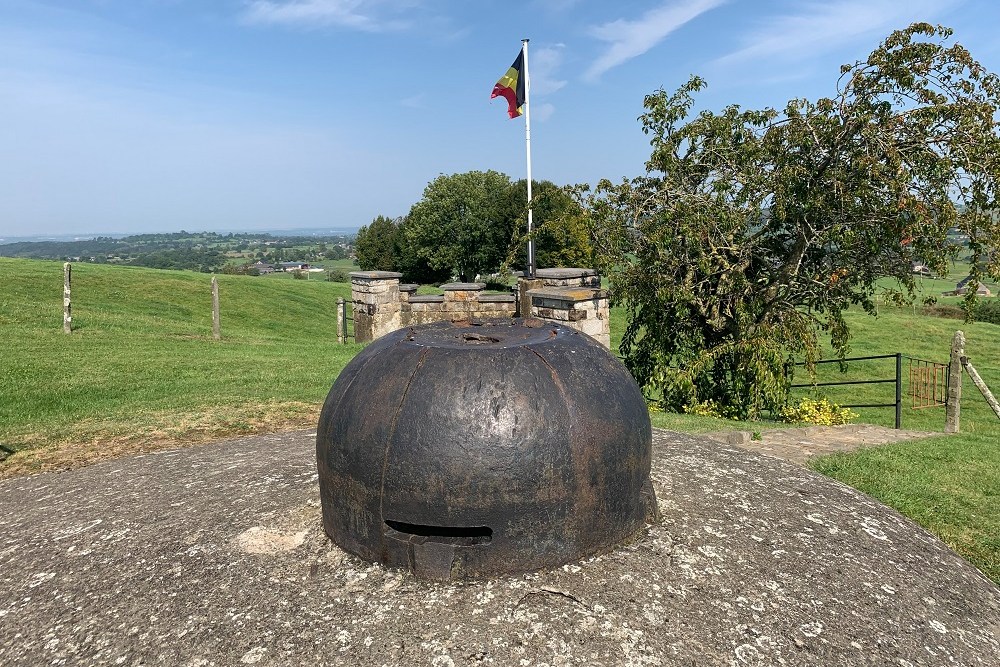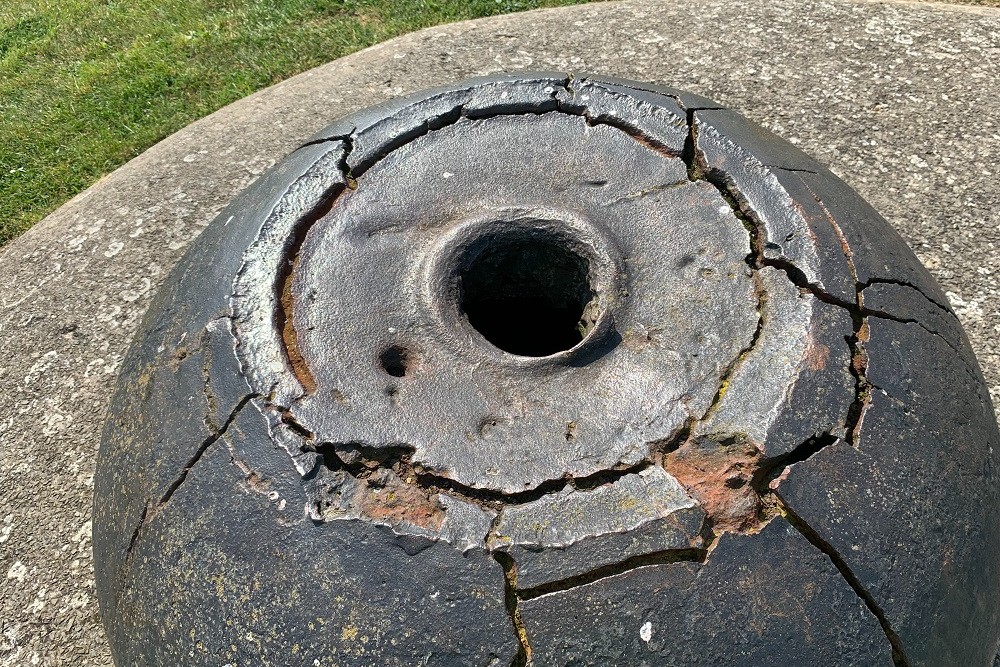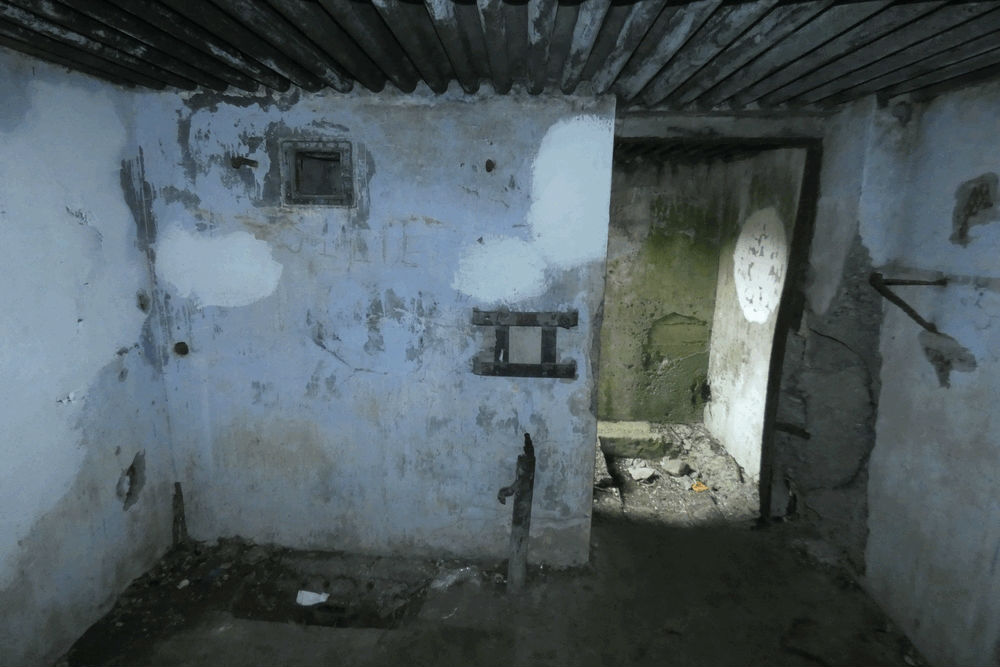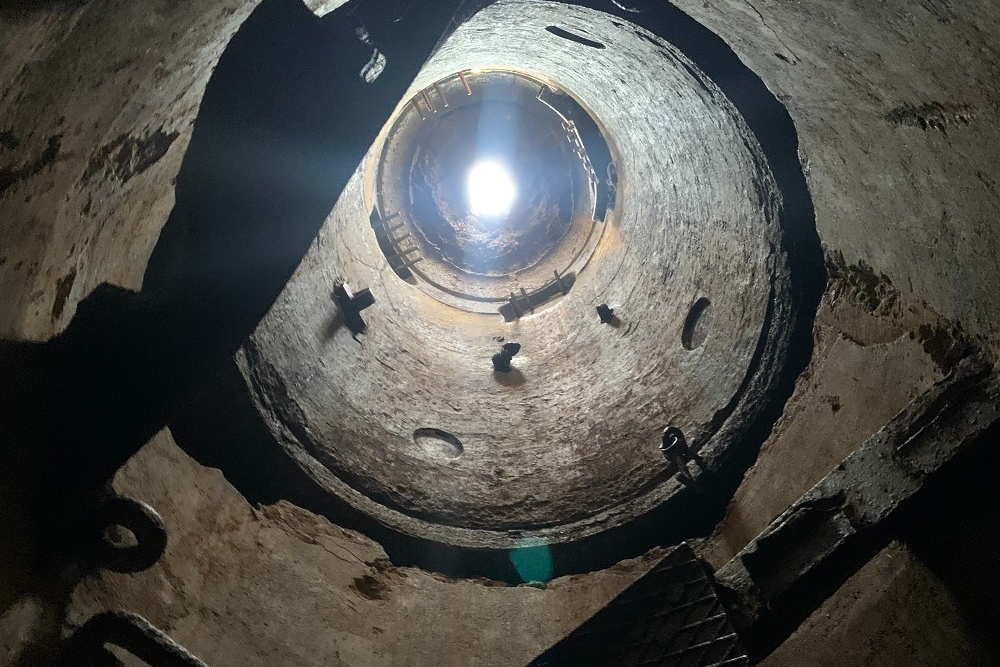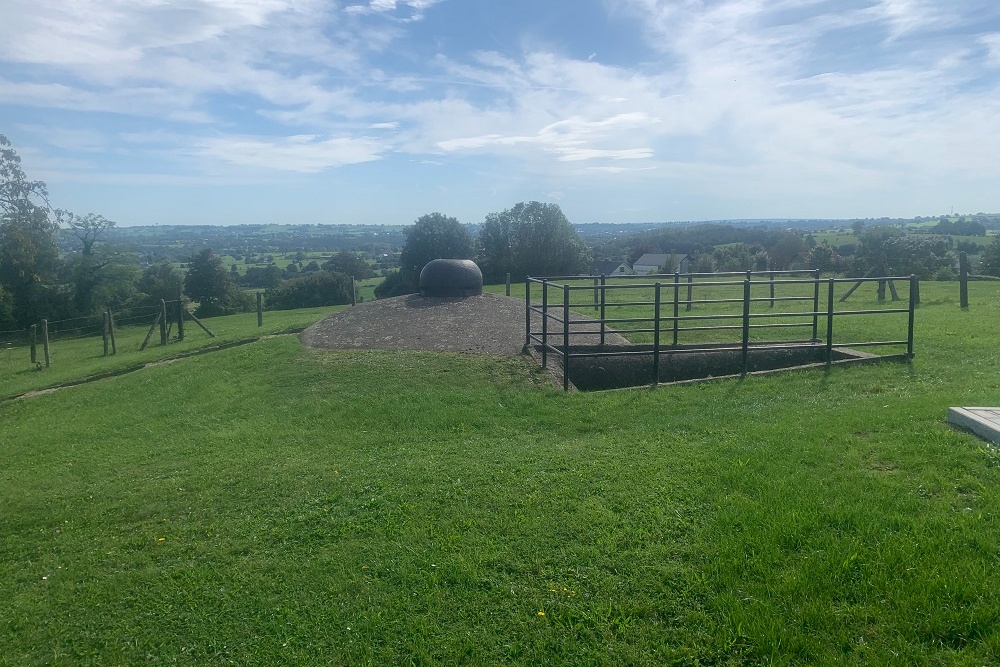Observation Post MN29
Bunker MN29 is the 29th bunker from the line 'Les Margarins-Neufchâteau' the 1st line of defence for the city of Liège, La Position Fortifiée de Liège (PFL). The bunker belongs to Fort Battice. The bunker endured heavy fighting.
At the beginning of the German invasion of Belgium, bunker MN29, during the period from May 10th to May 17th, 1940, was attacked several times. The forces inside, as the monument near the bunker indicates, consisted of 5 soldiers. Private Mertens was wounded by friendlu fire from the bunker on May 11th, 1940, when he had gone outside the bunker after a voluntary action to locate positions of German troop concentrations in front of nearby Fort Evegnée that they themselves could not see with their observation posts. After communicating these positions to his observation post via hand signals, he was mistaken for the enemy on his return to the bunker and shot. Meanwhile, the Germans thus attacked the bunker several times, which explained the confusion of the remaining soldiers in the bunker. Private Mertens wat takin inside the bunker but eventually died of his wounds on May 13th and was later on buried outside the bunker. He was buried outside the bunker on a quiet moment. After the war, he was buried in the field of honor of the Dison municipal cemetery. (photo 4)
Every time the Germans approached the bunker, firesupport from the Battice fort was requested over the phone to chase the enemy away. Only when Fort Battice had ammunition shortage it had to prioritize what to fire on, bunker MN29 received less and less support. On May 17th, the bunker was abandoned by the remaining crew due to lack of food, water and ammunition.
Mastersergeant Servais and Private Burton were killed on May 16 by an explosive placed by the Germans at the outside door of the bunker. The other two soldiers Schene and Canon are wounded in the process. Private Schene takes his wounded comrade to a farm the next day and tries to escape. He is made prisoner of war by the Germans.
The special feature of this observation post, however, is its turret. In the attacks on this bunker between May 11 and 17, 1940, it was not destroyed or damaged. There are no records indicating this. The turret of bunker MN29 is of the type "Cloche de guet". The turret weighs 6.7 tons. The armor on the side was 220 mm and on the top 210 mm. The turret had a fixed periscope.
Very likely the Germans carried out a test of the hollow charge on this turret. The charge of 50 kg. that also destroyed the turrets at Fort Eben-Emael. The "stamp" left by the hollow charge on the turret unmistakably resembles that which is still visible on the turrets of Fort Eben Emael as well.
While the damage caused by the hollow charge on the turrets of Fort Eben-Emael was concealed by cementing the damage to the turrets, this was not done on this turret. This can be explained by the fact that Fort Eben-Emael was used as a trophy. After the conquest, various dignitaries from friendly nations were invited to visit the fortress, which was considered unconquerable. The fortress that had been captured by the German forces within 1 day.
To hide the effect of the hollow charge, all the holes the hollow charge caused in the domes were filled with cement and coated with paint. Even the prisoners of war of the garrison of Fort Eben-Emael were put separately into captivity in Germany. Without contact with other prisoners of war. Whereas most Belgian soldiers were allowed to return home after a few months after the end of the battle in Belgium, the captured garrison of Fort Eben-Emael was kept prisoner of war until the end of the war. All this to keep secret the effect of their secret weapon, the hollow charge.
See, for example, the damage on the turret of casemate Maastricht 2, or that on the machine gun bunker Mi Nord and especially that on the turret of bloc IV This shows the same damage as on bunker MN29.
Because no "peeping eyes" were expected at this spot, an insignificant bunker in the countryside, the Germans never hid the damage done by the hollow charge. The hole that the hollow charge drilled into the 210 mm thick steel armor is still visible, (Although it should be noted that it detonated on top of the periscope, which of course is a vulnerability of the dome.) as is the outline of the placed hollow charge. It shows the same features as those at the destroyed turrets of Fort Eben-Emael. Given the minor damage to the inside of the bunker, this test was done with open doors. The bunker had two doors. The outer door was blown up by the Germans when attempting to capture the bunker. The bunker to the dome was and still is open. This allowed the pressure from the blast to leave the bunker through the open outer door without damaging the inside of the bunker.
Inside the bunker you can still see the tubes of the ventilation system. It is also worth mentioning that this bunker was one of the few connected to the power grid. The spot on the floor (see photo 3, next to the door) where the power cable enters the bunker is still visible. Also the smaller tubes through which the power cables were led internally to the turretroom. The walls and ceiling of the bunkers from the PFL are at standard 1.30 m. reinforced concrete. They had to withstand shells of 150 mm. To illustrate, the caliber of shells that a Königstiger could fire was caliber 88mm. So only heavier caliber fieldartillery could penetrate the concrete and potentially destroy the bunker.
Even today, 84 years later, the damage of the hollow charge makes a huge impression. The hollow charge was placed on the turret in two parts (because of the weight of the hollow charge, it was transported by the men in two separate matching pieces). The hollow charge aimed its explosion downward only at a central spot, creating a heat ray of nearly 3,000 degrees Celsius that melted through the dome and destroyed everything on the inside. The same principle was applied to the "Panzerfaust" and the "Panzerschreck. A portable hollow charge that could be fired from the shoulder or hip at armored vehicles to achieve the same effect as piercing the armored turrets of forts and bunkers.
Incidentally, the hollow charge was later used by the U.S. armed forces in their "Bazooka.
Do you have more information about this location? Inform us!
Source
- Text: Ed Lewandowski
- Photos: Ed Lewandowski (1, 2, 4, 5), Ricky van Dyck (3)
- https://18daagseveldtocht.be
- La Position Fortifiée de Liège, Coenen & Vernier
Nearby
Museum
- Fort Battice - Fortified Position Liège - Battice (Herve)
- Fortress Aubin-Neufchâteau - Neufchateau (Dalhem)
- Museum of the Fort Aubin-Neufchâteau - Neufchâteau (Dalhem)
Point of interest
Monument
- Memorial Observation Post MN29 - Charneux (Herve)
- Commemorative Plate Second World War Charneux - Charneux (Herve)
- Monument Protecting Virgin of 14 May 1940 Charneux - Charneux
Cemetery
- Belgian War Graves Charneux - Charneux (Herve)
- Belgian Graves Veterans La Minerie - La Minerie (Thimister-Clermont)
- Belgian War Graves Aubel - Aubel
Remembrance Stone
Fortification
- Bunker MN 28 Charneux - Charneux (Herve)
- Bunker MN 30 Champiomont - Champiomont (Herve)
- Defense Bunker MN6 - Herve
